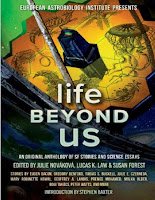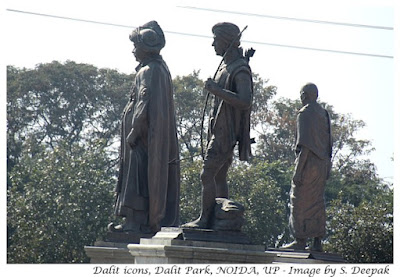Our reading group in Schio in the north-east of Italy meets once a month to talk about a book. Our "reading season" starts in September and ends in the following June, because in the summer, many group members go away for holidays.
This year, Michela, coordinator of our reading group, proposed a different way to end our reading season - "Let us go out somewhere and do something different." One of our group members, Carla, suggested that we go to the house of her friend Lello, who lives on a hill in Malo, a few kilometres south of Schio.
Lello (Raffaello Rossi) is a retired physical-education school teacher. His house is on Montepiano mountain, at an altitude of about 500 metres. Parts of the road leading to his house are narrow, but it is a motorable road. The house stands at the edge of a precipice looking down at a valley covered with a dense forest. (Click on the images for a bigger view)
Life and Works of an Artist: Sem Giovanni Rossi (M. Rinaldi)
Our group meeting started with an introduction by Lello about his father, Sem Giovanni Rossi, who was a painter living in Rome. Seventeen years old Sem had participated in the first world war and risked dying in an Austrian prison. A self-taught painter, Sem worked with oils and tried different painting styles and subjects. He became known for his sea paintings, which he produced in large numbers, and which are today scattered across continents, especially in Italy, Germany and USA, and are signed under a paseudonym, as "M. Rinaldi".
After the introduction, Lello took us around a tour of his home where he has a permanent exhibition of about 40 paintings of his father. I love looking at the art works through the eyes of the artists, as they explain the background stories about their works. In this case, we were looking at artworks through the eyes of a son, who had seen his father make those paintings and it was fascinating.
For example, one of the paintings has a young woman sitting and sewing. Lello explained that the young woman was Alina who worked in a sewing workshop next door to his father's art studio.
For another painting of a house at the Spanish Steps in Rome, he explained that it was the house of Giorgio de Chirico, who was a friend of his father and a well known artist and writer, "de Chirico wanted this painting but my father refused", he said.
As Lello talked about the still-life, the old-walls, the old men sitting and the tiny rays of light illuminating corners of mostly dark and malinconic paintings, it said something about the time gone by, about his relationship with his father and his understanding of his father's art, that was at once very moving, deeply personal and intimate.
Walking and Talking About Books
After the visit to Lello's home and talking about his father's artworks, we decided to go for a walk along a mountain track. For this walk, Michela had prepared sheets of papers for the group members, with brief extracts from the books we had read over the past year.
As we went out, we stopped occasionally for someone to read aloud his/her paper to the others, to try to guess the name of the book and sometimes to talk about the experience of reading that book. The extracts chosen for this exercise were very different, some funny and light-hearted, some emotional and touching.
We started from a tiny church dedicated to San Valentine and then entered a mountain path, initially lined by mulberry trees, loaded with dark and inviting mulberries, full of tasty juices which coloured red our fingers and mouths.
It was not a long walk, perhaps a couple of kilomteres and did not have big altitude differences, so that everyone could do it.
Reaching back at Lello's house after the slow and lingering walk, it was time for drinking and eating. Some of our group members had prepared cakes and snacks, others had brought drinks, so we sat down to eat while Lello shared some other memories about his arrival in Schio, some forty years ago.
Friendships and Connections
As the evening arrived and we prepared to leave, I was thinking about the afternoon spent in so many intense experiences - the beautiful terrace overlooking the green valley, covered with vine trees with budding grapes, Lello's stories about his father's artworks, our walk between the mulberry trees, the taste of fresh mulberries, and the pleasures of listening to the words from the books we had read, evoking memories of their story-worlds.
A key part of the beauty of this experience was made up by the conversations, sometimes long and sometimes brief, we had with friends in the group, as we walked or sat around, sharing about our lives, our plans, our big or small sufferings and challenges. Memories of this afternoon will remain with me for a long time.
***









.jpg)










